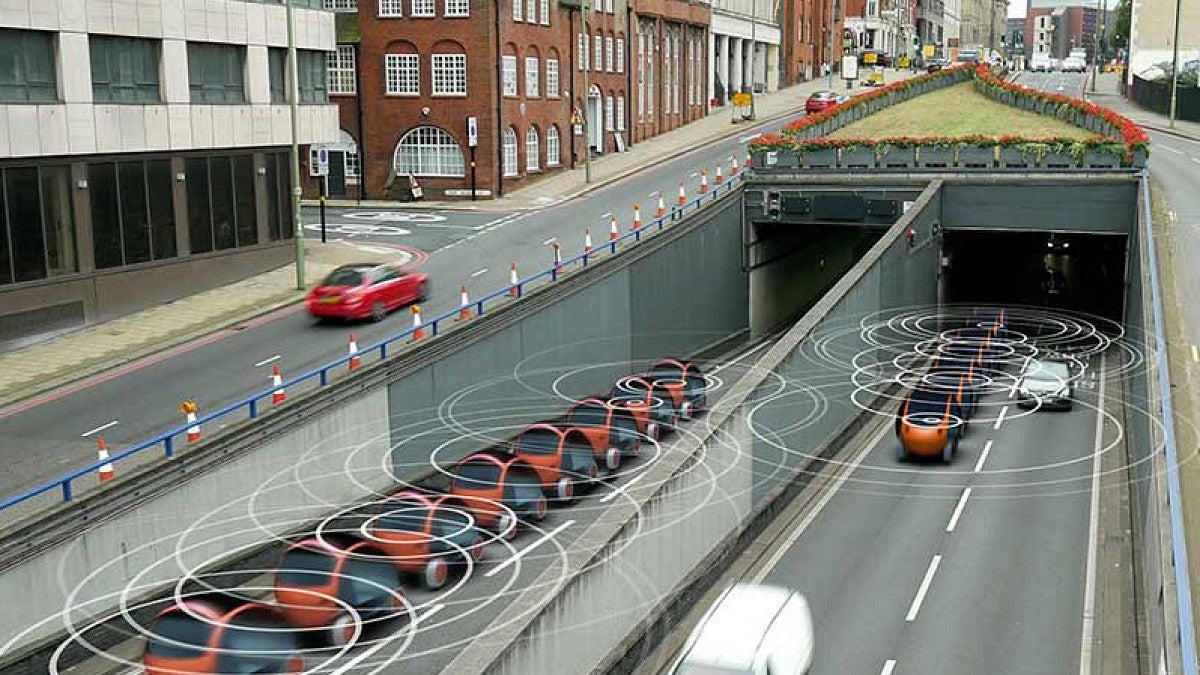It may not be too much longer before you can hail a cab with no driver, watch a movie on your way to work or even take a nap while headed to the grocery store, as the age of the autonomous vehicle quickly approaches reality.
It also may very well put 4 million people out of work, end the need for parking lots and mean not owning your own car.
Those are some of the topics that will bring more than 50 policy experts and urban planners together from across the country for Urbanism Next, a workshop sponsored by UO and its Sustainable Cities Initiative. The daylong event, which takes place April 24 at the UO's White Stag Building in Portland, will summarize researched findings on the coming challenges of autonomous vehicles and e-commerce, allowing participants to collaborate on solutions to possible effects on the urban landscape, public policy and revenue.
How far away is this future? Twenty years? Ten? Five?
It’s most likely closer than you think, according to Nico Larco, associate professor of architecture in the School of Architecture and Allied Arts and co-director of the Sustainable Cities Initiative.
“It's unlike like any other research I've done before,” he said. “In October of last year, we had the first autonomous truck delivery of freight in Colorado. This is not science fiction. This is happening right now. Our questions are based much more on what the secondary effects on city design and development will be.”
Take unemployment, Larco said. Reports suggest a loss of more than 4 million well-paid jobs in the trucking and driving industry, jobs now held largely by lower-skilled people that keep families out of poverty.
In addition, e-commerce, which will be a big user of autonomous transportation, is expanding. Retail visits dropped 12 percent last holiday season as more people shopped online than in brick and mortar stores.
“To me, that’s dramatic,” Larco said. “A 12 percent drop means you need 12 percent fewer stores.”
It may also mean a loss of municipal revenue, create blight as storefronts close and raise costs for fire and police services.
According to Larco, while there is ample research on the technologies themselves, “There is a dearth of research on the secondary effects on cities.”
“The forward thinking and multidisciplinary approach the Sustainable Cities Initiative is leading is also positioning UO as a leader in this field,” he said. “The links between disciplines and between the public, private and academic sectors is helping create bridges between university and local and national partners.”
Other scenarios abound, including the need to implement changes in street design, transportation infrastructure, parking, land use density and building design. Although the workshop will primarily address issues surrounding Portland, the goal is to take the findings and to apply them to any city.
The event will be the first phase in a program Larco hopes will bring attention to upcoming challenges and help find solutions now to problems that are looming on a not-so-distant horizon. The next steps include a larger symposium and dissemination of research to professionals in the field.
Jeff Tumlin, the Sustainable Cities Initiative expert in residence, will present the keynote address and discuss the possible effects of autonomous vehicles on form, function and movement within cities. He will present two additional lectures in Portland and Eugene: in Portland at 5:30 p.m. Tuesday, April 25, at 109 Naito Parkway, and in Eugene at 5:30 p.m. Wednesday, April 26, in Room 106, Lawrence Hall. Both lectures are free and open to the public.
Read more about this work at the Sustainable Cities Initiative Urbanism Next blog: http://urbanismnext.uoregon.edu.
—By Laurie Notaro, University Communications


